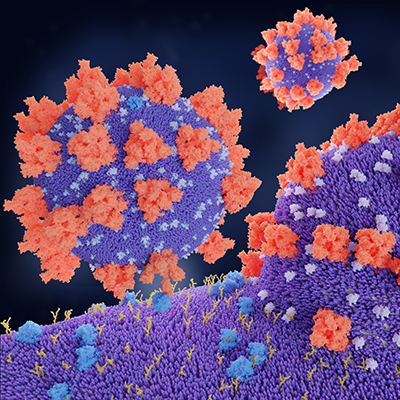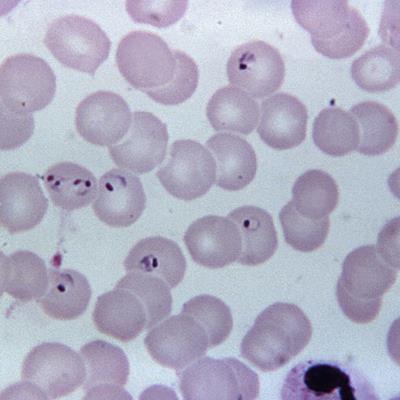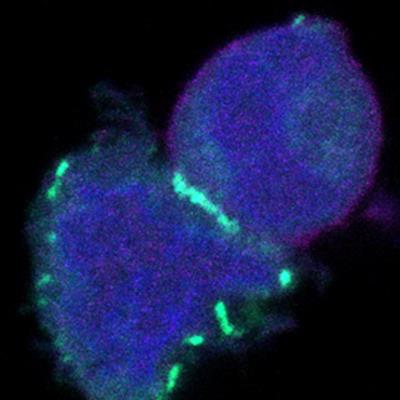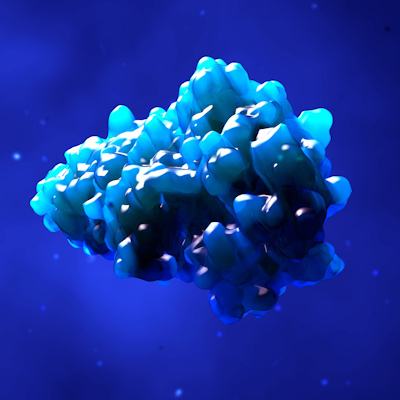 Machine learning used to encode commands for immune cells
Machine learning used to encode commands for immune cells
Researchers at University of California San Francisco (UCSF), in collaboration with a team at IBM Research, have developed a virtual molecular library of thousands of “command sentences” for cells, based on combinations of “words” that guide engineered immune cells to seek out and kill cancer cells without pausing. Read More
 Vegetables contain ‘garden variety’ cancer drugs
Vegetables contain ‘garden variety’ cancer drugs
Polish scientists have revealed the potential for new cancer drugs formulated from nightshade plants (genus Solanum), including potatoes and eggplants. Read More
 New drug 'fakes out' SARS-CoV-2 to neutralize it
New drug 'fakes out' SARS-CoV-2 to neutralize it
A new drug neutralizes SARS-CoV-2 and its variants by acting as an ACE2 receptor decoy, Dana-Farber Cancer Institute researchers revealed. Read More
 Scientists manufacture malaria sporozoites without mosquitoes
Scientists manufacture malaria sporozoites without mosquitoes
Sanaria scientists have manufactured Plasmodium falciparum (Pf) sporozoites (SPZ) in vitro, enabling the critical, first breakthrough steps to scale up manufacturing of the PfSPZ malaria vaccine. Read More
 USC researchers create 'heart attack on a chip'
USC researchers create 'heart attack on a chip'
University of Southern California (USC) researchers have developed a "heart attack on a chip" that replicates key aspects of myocardial infarction and might one day serve as a testbed for new personalized heart drugs. Read More
 Salk Institute scientists identify oncogene activation
Salk Institute scientists identify oncogene activation
Researchers at the Salk Institute have zeroed in on the mechanisms that activate oncogenes, showing that genetic mutation activity depends on the distance between a particular gene and the sequences that regulate the gene. Read More
 Shenandoah expands cytokine, growth factors portfolio for cell and gene therapies
Shenandoah expands cytokine, growth factors portfolio for cell and gene therapies
Shenandoah Biotechnology, a Fujifilm Irvine Scientific company, has announced the expansion of its CTGrade portfolio of cytokine and growth factors for cell and gene therapies that are manufactured following current good manufacturing practices. Read More
 New method detects 'buddy' proteins within cells
New method detects 'buddy' proteins within cells
Researchers from University of Chicago’s Pritzker School of Molecular Engineering have developed a method to find proteins located in close proximity to each other inside a cell. The technology uses high-throughput genomic sequencing to measure proteins, protein complexes, and mRNA within individual cells. Read More
 Glowing protein allows deeper looks at living tissues
Glowing protein allows deeper looks at living tissues
Duke University and Albert Einstein College of Medicine researchers have designed a small fluorescent protein that absorbs and emits wavelengths of near-infrared light that penetrate deep into living tissue. Their technique, outlined December 1 in the journal Nature Methods, captures detailed high-resolution biomedical images. Read More
 New method helps scientists identify efficient, tailored AI algorithms
New method helps scientists identify efficient, tailored AI algorithms
Researchers from Cold Spring Harbor Laboratory have developed a new method designed to assist scientists in choosing artificial intelligence (AI) algorithms that best fit their needs. Their findings may help researchers in identifying more efficient AI programs to analyze the human genome. Read More
Member Rewards
Earn points for contributing to market research. Redeem your points for merchandise, travel, or even to help your favorite charity.
Research Topics
Interact with an engaged, global community of your peers who come together to discuss their work and opportunities.
Connect
Tweets by @ScienceBoard



